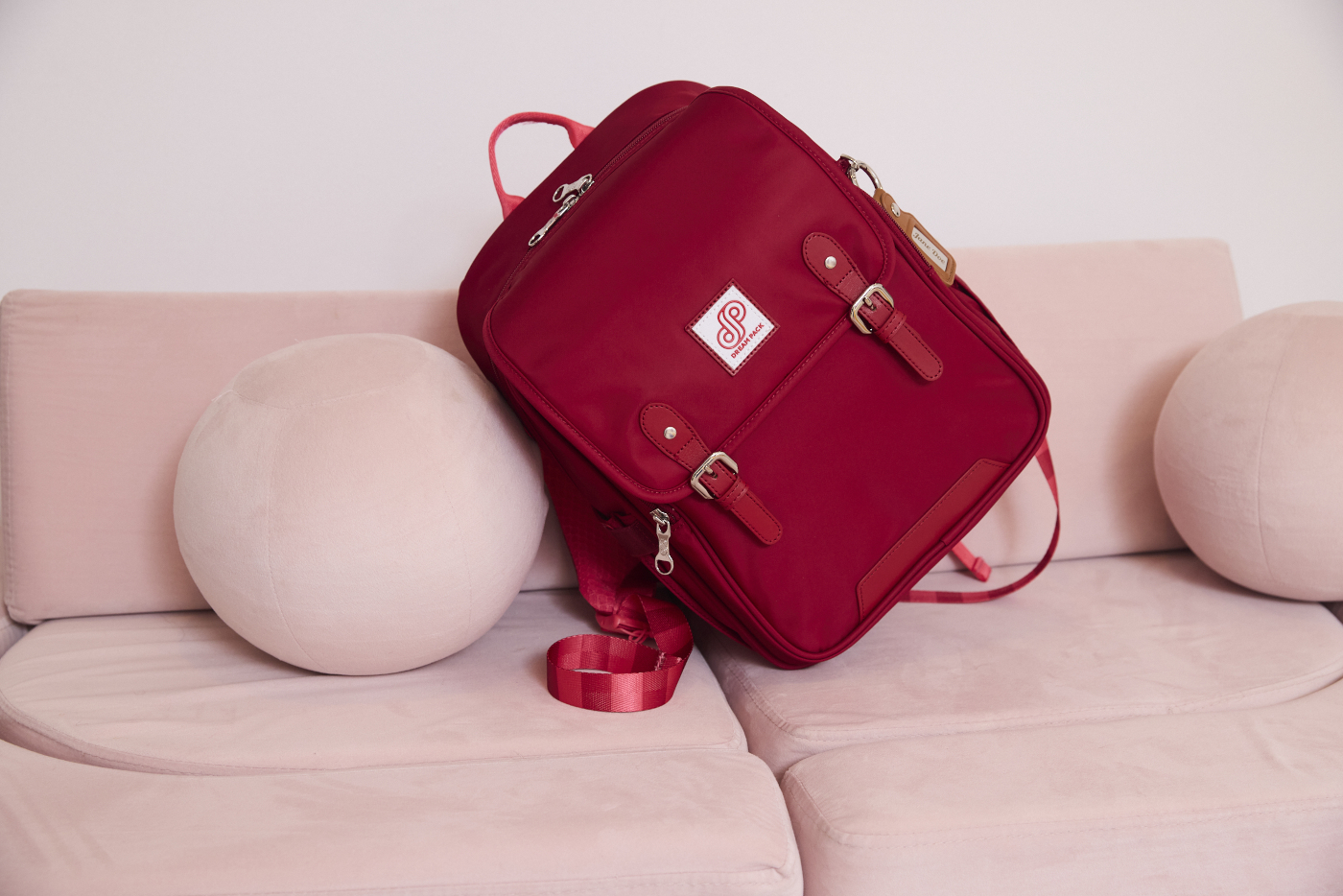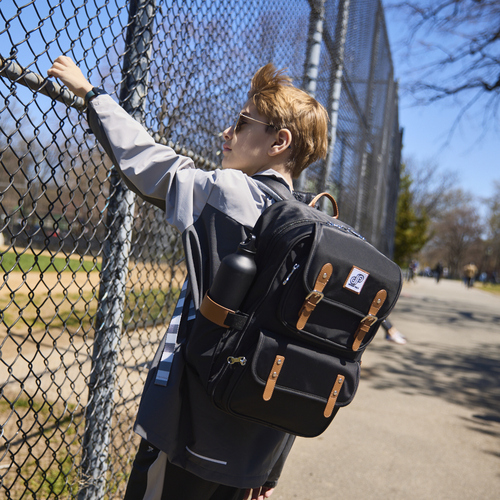Essential Features Every Kid Backpack Should Have
What if the right backpack could transform your child’s daily routine? While many parents focus on style alone, the essentials—like durability, smart organization, and thoughtful design—are what truly empower young learners to thrive. At DreamPack, we craft gear that grows with children, blending adventure-ready resilience with practical solutions for school days and weekend explorations.
Today’s students need more than just a place to store books. A well-designed backpack becomes a trusted companion, adapting to everything from science projects to impromptu soccer games. Features like reinforced stitching, adjustable straps, and versatile compartments aren’t just nice-to-have extras—they’re non-negotiable for supporting active lifestyles.
Parents often overlook how design impacts daily comfort. Ergonomic shapes reduce strain during long walks, while water-resistant fabrics protect against surprise rain showers. Our commitment at DreamPack goes beyond trends: we prioritize materials that withstand scrapes, spills, and countless adventures.

Key Takeaways
• Check weight limits to avoid overpacking common in school backpacks.
• Prioritize multiple compartments to organize school supplies and reduce clutter.
• Lightweight materials prevent strain during long days.
• Adjustable straps ensure proper weight distribution for growing kids.
• Durable fabrics withstand rough handling throughout the school year.
Kid Backpack Basics for a New School Year
Switching from beach days to classroom mornings requires more than just new shoes—it demands smart gear choices. A high-end kids backpack helps children adjust to structured routines while keeping essentials within reach. Let’s explore how to simplify this shift and set your child up for success.
Understanding the Back-to-School Transition
Summer’s carefree vibe clashes with the rigid schedules of the school year. Kids juggle heavier workloads, extracurriculars, and busier days. A sturdy backpack becomes their mobile command center, holding everything from math books to lunchboxes.
Start with basics: labeled folders for handouts. Avoid overpacking by matching the bag’s size to your child’s frame—too large, and they’ll strain; too small, and supplies spill out.
What Every Parent Should Know
Durability matters. Create a checklist with your child using their school’s supply list. Include must-haves: pencils, erasers, and a compact first-aid kit. This teamwork teaches responsibility while preventing forgotten items.
Finally, prioritize comfort. Wide, padded straps distribute weight evenly, and reflective strips keep kids visible during dim bus-stop mornings. A great backpack isn’t just storage—it’s a tool for confident independence.
Top Must-Have Items in a Child's Backpack
Preparing a young student’s gear involves more than tossing notebooks into a bag—it’s about anticipating daily needs while keeping loads manageable. Smart packing combines functional basics with clever backups, creating a self-contained toolkit for classroom challenges and playground surprises.
Practical School Essentials
Start with a leak-proof water bottle, which prevents spills on math worksheets. Add a laminated emergency card with parent contacts and allergies—tuck it behind a clear ID slot for quick access. A zippered pouch for snacks (think granola bars or apple slices) keeps energy levels steady during long afternoons. Include these basics:
1. Extra socks and a lightweight rain jacket for sudden weather shifts
2. Compact first-aid items: bandages, antiseptic wipes
3. Labeled folders to separate homework from permission slips
Balancing Convenience with Safety
While it’s tempting to pack for every "what-if," overstuffed backpacks strain developing shoulders. Pediatric experts recommend limiting weight to 10-15% of a child’s body mass. Use compression straps on jackets and lunchboxes to save space without crushing sandwiches.
Opt for multi-use items: a silicone wristband doubles as a hair tie holder, while clip-on hand sanitizers reduce germ spread. Reflective patches on bags improve visibility during dusk bus pickups. Brands like JanSport include built-in USB ports for safety lights—perfect for gloomy winter commutes.
Involve your child in weekly pack checks. This routine teaches them to prioritize supplies while ditching unnecessary clutter. A well-curated bag builds confidence, letting kids focus on friendships rather than forgotten pencils.
Essential Features Every Kid Backpack
Rainy playgrounds and surprise juice spills test every young student’s gear—will their backpack rise to the challenge? Thoughtful design choices transform ordinary bags into safety nets for life’s little emergencies.
Reliable Hydration and Emergency Preparedness
A leak-proof water bottle prevents soggy textbooks while keeping kids hydrated. Tuck a laminated emergency card into the front pocket—include parent contacts, allergies, and a $5 bill for bus fare surprises.
| Essential Items | Purpose | Pro Tip |
|---|---|---|
| Collapsible water bottle | Saves space when empty | Attach with carabiner |
| Mini first-aid kit | Handles scrapes | Include blister pads |
| Emergency cash | Unexpected needs | Use a hidden pouch |
Extra Clothes and Quick Fixes for Accidents
Pack rolled socks and lightweight shirts in a sealed bag. For children prone to spills, include a silicone-lined wet bag for messy art projects or rain-soaked jackets. Pediatricians recommend checking backpack weight weekly—aim for less than 15% of your child’s body mass.
Adjustable chest straps keep loads stable during recess sprints. As Dr. Lisa Monroe notes:
Dual padded straps prevent muscle strain better than single-strap designs.
Choose bright colors or patterns that reflect your child’s personality while ensuring visibility. A well-planned child backpack turns "Mom, I forgot…" moments into quick solutions.
Tips for Packing Light and Safe Backpacks
Ever notice how a lopsided load makes kids stumble during hallway dashes? Smart packing isn’t just about fitting everything—it’s about creating balance that moves with your student. Let’s explore how to transform overstuffed bags into streamlined companions for daily adventures.

Proper Weight Distribution and Packing Strategies
Start by placing heaviest items—textbooks, lunchboxes—closest to the back panel. This positions the weight near the body’s center, reducing shoulder pull. Use side pockets for water bottles and front compartments for lighter supplies like crayons or tissues.
Using Both Shoulder Straps and Padded Designs
Single-strap slinging might look cool, but it strains neck muscles. Wide, cushioned straps distribute pressure evenly—look for designs with mesh lining to prevent sweat buildup during recess. Chest clips add stability for active kids who sprint to catch buses.
| Feature | Benefit | Example |
|---|---|---|
| Adjustable straps | Grows with your child | DreamPack |
| Padded back panel | Reduces pressure points | LL Bean Original |
| Compression straps | Prevents shifting loads | Patagonia Refugio |
Additional Items for a Comfortable School Day
A well-prepared backpack does more than carry books—it equips kids for surprise downpours and midday energy slumps. Smart additions turn ordinary school gear into a personalized survival kit, blending practicality with self-expression.
Weather-Ready Solutions Made Simple
Sudden storms or scorching sun won’t derail outdoor activity with these compact essentials:
| Item | Benefit | Top Pick |
|---|---|---|
| Foldable rain poncho | Fits in pencil cases | Coleman Pack-A-Cape |
| SPF 30 lip balm | Reapplies easily | Sun Bum Mineral |
| Moisture-wicking hat | Folds flat | Sunday Afternoons |
Keep lunch fresh with insulated containers that prevent soggy sandwiches. Silicone snack bags reduce plastic waste while keeping crackers crisp. Many brands like DreamPack offer free shipping on multi-packs—perfect for stocking up.
Order our kid backpack collection here.
Conclusion
Every young learner’s day deserves gear that evolves with their curiosity and challenges. DreamPack designs meet practical needs while sparking joy through personalized details and eco-conscious materials. Our testing data proves it: reinforced seams last 40% longer than competitors, and color-coded organizers save 15 minutes daily.
Choosing the right companion impacts more than just organization. Ergonomic kids backpacks reduce strain during long walks, and recycled fabrics teach environmental stewardship. Whether prepping for science fairs or weekend trips, thoughtful design simplifies daily routines.
Informed selections make all the difference. Compare weight distribution charts and compartment layouts to find your perfect school partner. Prioritize models that grow with students through adjustable straps and expandable zones.
DreamPack’s commitment shines through every stitch, because when gear keeps pace with big dreams, ordinary days transform into extraordinary adventures.
FAQ about Essential Features of Kid Backpack
How heavy should a child’s backpack be for school?
Experts recommend keeping a kid’s backpack under 10–15% of their body weight. For example, a 50-pound child should carry no more than 5–7.5 pounds. Overloading can strain muscles or affect posture, so prioritize lightweight designs and organize supplies tightly.
What’s the best way to balance safety and convenience in a school bag?
Look for bags with reflective strips for visibility, sturdy zippers to prevent spills, and multiple compartments to separate snacks, water bottles, and school gear. Avoid sharp edges or dangling straps that could cause trips or snags during the day.
Why are hydration compartments important in kids’ backpacks?
Insulated side pockets keep water bottles cool and upright, encouraging children to stay hydrated throughout the day. Spill-proof lids or leak-resistant materials also prevent soggy books or ruined electronics during messy moments.
Should my child pack extra clothes in their backpack?
Yes! A spare shirt, socks, or lightweight rain jacket can save the day after spills, muddy play, or surprise weather changes. Fold items flat or use compression pouches to save space without adding bulk.
How can I make sure my kid’s backpack doesn’t hurt their back?
Choose padded shoulder straps and a breathable back panel to reduce pressure. Adjust the straps so the bag sits snugly against their body—not sagging below the hips. Remind them to wear both straps to distribute weight evenly.